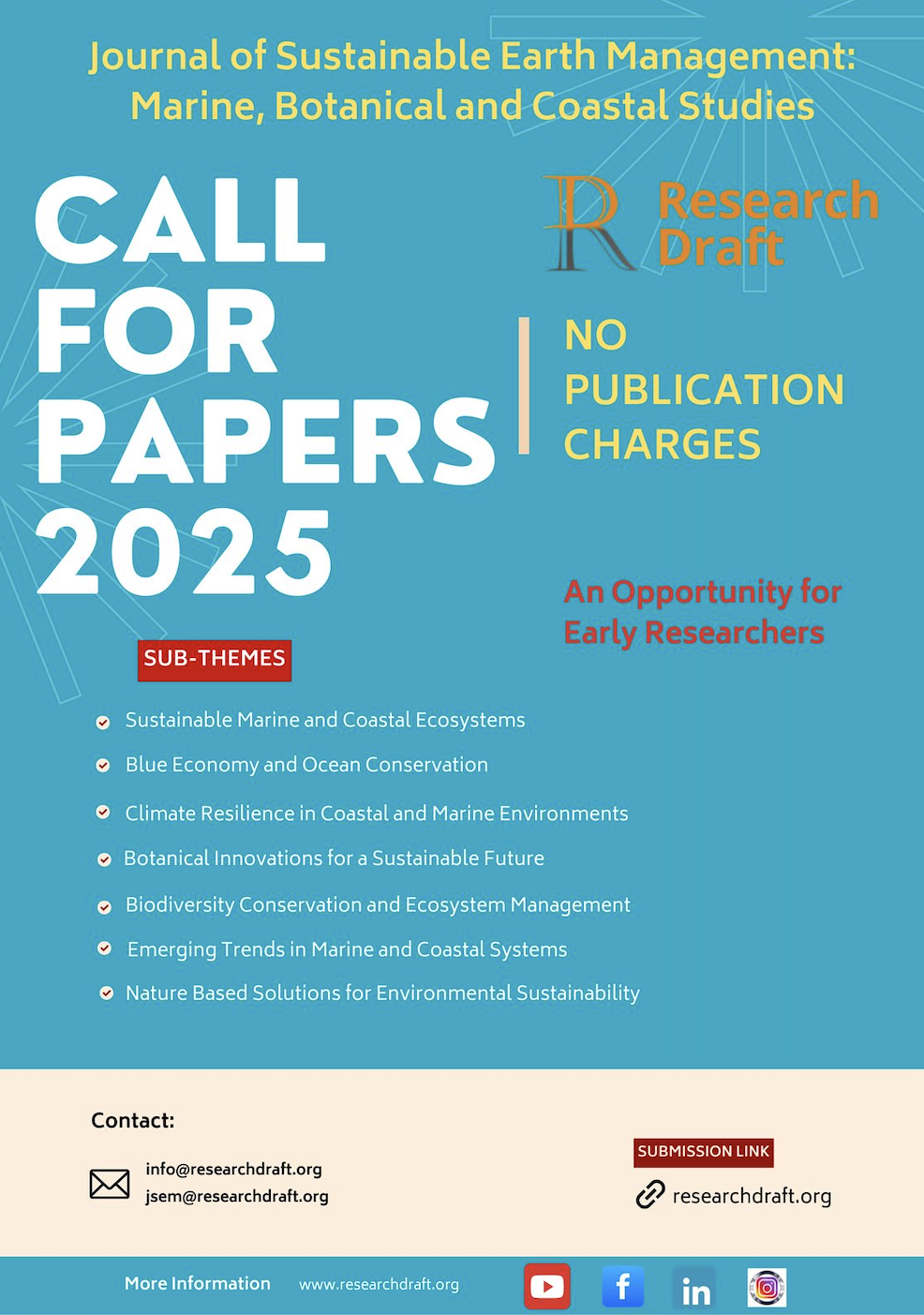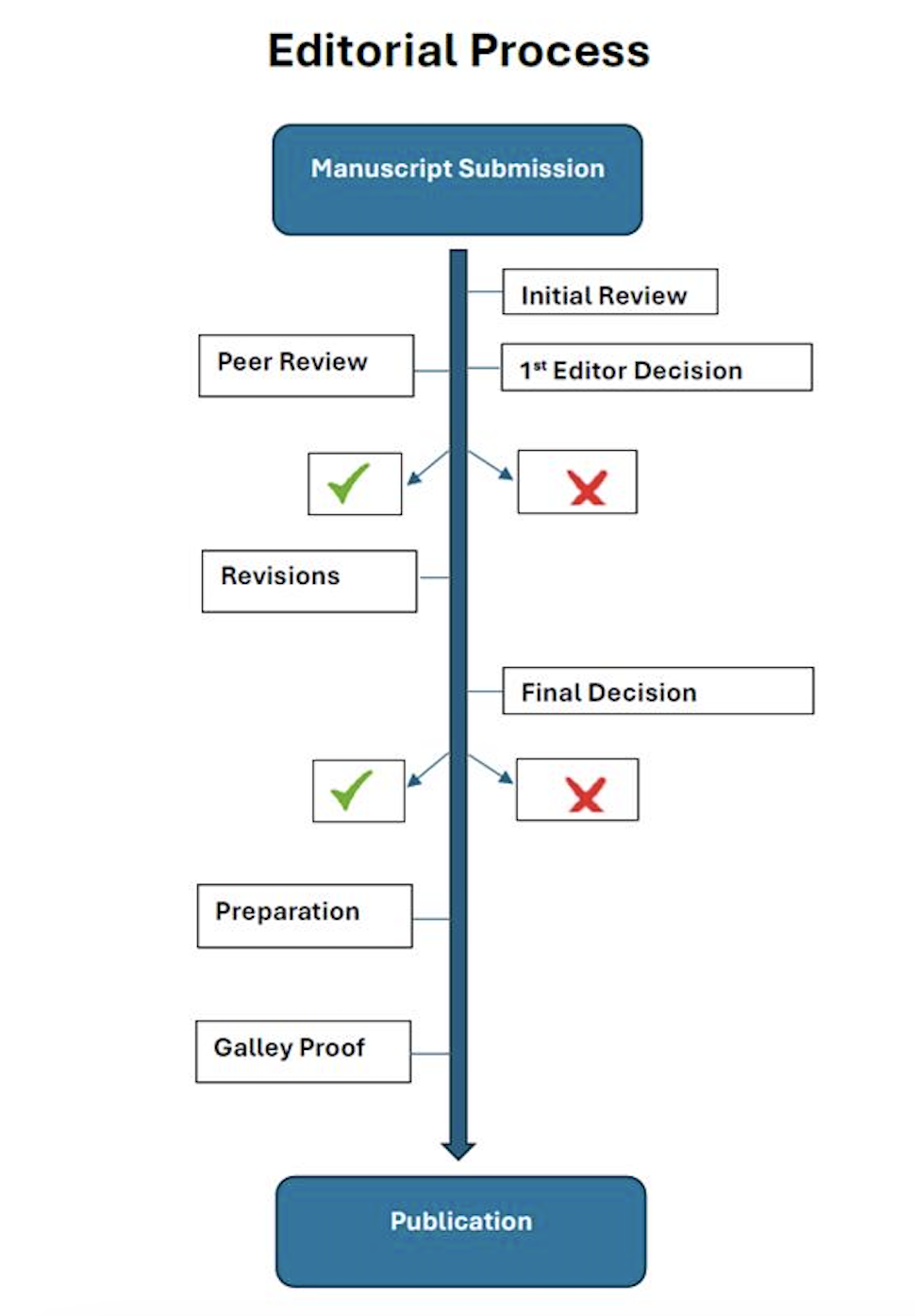

Authors Guidelines
Article Title: The manuscript title should reflect the aim, purpose, and offer a detailed summary of the key experimental or theoretical research conducted.
Authors Name: The authors' names must be listed according to their contributions, the list of authors cannot be altered, including during the modification, revision, or galley proof stages.
F. A. Name1*, S. A. Name2 and T. A. Name1,2
1 Department, Institution, City, Country
2 Department, Institution, City, Country
*Corresponding Author’s E-mail : HYPERLINK "mailto:name@institution.edu"name@institution.edu
Abstract: The abstract should summarize the contents of the paper in short terms including objective, methods, findings and conclusion with its statistical significance. i.e. 200-250 words.
Keywords: Five Keywords, general and innovative, field relevant and easy to search.
Note: Key words should not be present in the title of the manuscript.
Abbreviations: Any nonstandard abbreviations should be kept to a minimum and must be defined in the text the first time they are introduced; however standard abbreviations should be employed throughout the manuscript without periods.
Introduction: Must contain a comprehensive summary of existing research relevant to the study, identifying key findings, gaps, and areas for further exploration.
Materials and Methods: Describe all the details of material and methods such as study location with map, sampling methods, protocols or indexes, the experimental methods should be outlined with enough detail to allow others to replicate the experiments. Innovative experimental techniques should be thoroughly explained, while established procedures can be cited through relevant literature, including references to both the original and any subsequent modifications.
Ethical approval: Manuscripts presenting data from animal and/or human research must indicate the committee and institution that granted approval for the experimental protocols used in the study.
Statistical analysis: Authors should specify the software and its version utilized in the research, along with the tests applied for data analysis.
Results and Discussion: Give your results in the form of figures and tables and discuss while citing literature. Tables and figures should be clear and streamlined to effectively present and clarify the experimental data. Data should not be repeated in multiple figures or presented in both a figure and a table.
Table SEQ "Table" \* MERGEFORMAT 1. Table captions should be placed above the tables
Heading level
Example
Font size and style
Title (centered)
Lecture Notes
14 point, bold
1st-level heading
1 Introduction
12 point, bold
2nd-level heading
2.1 Printing Area
10 point, bold
Fig. SEQ "Figure" \* MERGEFORMAT 1. A figure caption is always placed below the illustration. Short captions are centered, while long ones are justified.
Conclusion: For citations of references, use the numeric style. Conclude here your study please be general and conclusive between 100-150 words.
Acknowledgements: You can acknowledge your donors and persons who assisted you technically in carrying out this study.
Citation in Text:
In the text, when citing a single author, use the format (e.g., Stephens, 2018).
For two authors, both names should be separated with an "and" (e.g., Brown and Endrizzi, 2016).
For works by more than two authors, use the first author's name followed by "et al (for e.g.; Brown et al., 2017)
When citing multiple sources in the text, they should be arranged in chronological order (e.g., Stephens, 2009; Brown & Endrizzi, 2010; Ashraf et al., 2012; Wang, 2014; Sajid & Aqeel, 2018).
If the same author has multiple publications in the same year, differentiate the references with a, b, c, etc. (e.g., Ashraf et al., 2004a, 2004b; Wang & Liu, 2018).
Citation in References:
Journal Article
Author’s Sir Name, first name abbreviated., (year). Title of article. Journal name (Full name), Volume (Issue), Page numbers. DOI
Examples
Elmer, W., & White, J.C., (2018). The future of nanotechnology in plant pathology. Annual review of phytopathology, 56(1),111-133.
Pugnaire, F.I., Morillo, J.A., Peuelas, J., Reich, P.B., Bardgett, R.D., (2019). Climate change effects on plant-soil feedbacks and consequences for biodiversity and functioning of terrestrial ecosystems. Science advances, 5(2),18-34.
Book
Author’s Sir Name, first name abbreviated., (year). Title of the Book. Edition number, Publisher name. DOI
Example
Ahmad, P., Prasad, M.N.V., (2011). Sustainable Climate. 5th Edition, Springer. DOI
Book Chapter
Author’s Sir Name, first name abbreviated., (year). Title of the Chapter. Book Title, Edition number, Publisher name, Page numbers. DOI
Example
Parmesan, C., (2015). Plants and climate change: complexities and surprises. Sustainable Climate, 3rd Edition, Springer, 849-864. DOI
Important Note:
Total paper should consist of minimum 2000 words containing section of Title, Abstract, Keywords, Introduction, Material and Methods, Results and Discussion and References.
A minimum of 3 figures/Tables and latest references should be present in it.
All text should be in Times New Roman, font size 12 and justified.
The submitted manuscript should be according to the HEC plagiarism policy.
